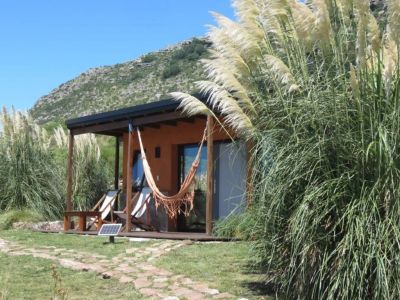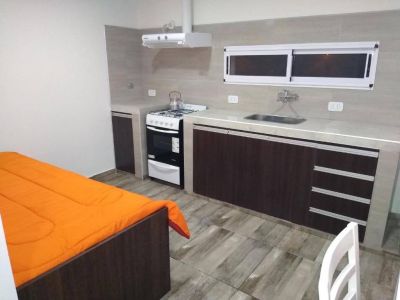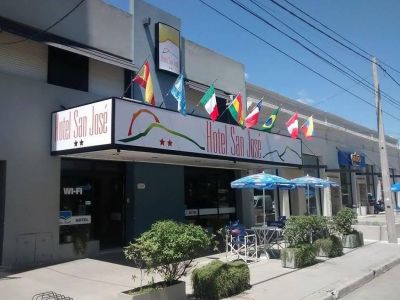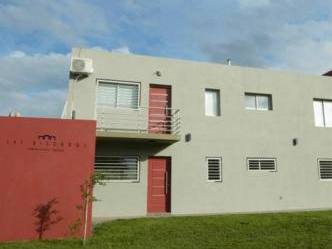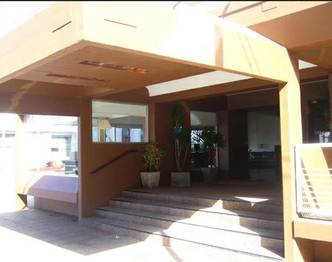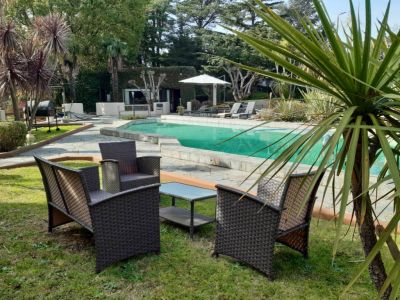The Juan Manuel Fangio Museum is one of those museums one should not miss, as it shows car racing not only as a sports discipline but also as an Argentinian passion. In an amusing and documented way, the life of Juan Manuel Fangio, alias “the bowlegged man”, the most famous son of Balcarce, is told in chronological order since his childhood, through the history of the first repair shop he opened with his friend José Duffard, his beginnings as a pilot in 1936, the championships he won in 1951, 1954, 1955, 1956, 1957 and his memorable races until he retired.
The first great impact when one enters the museum is generated by a giant cup located in the entrance hall. It is a gift the Rosario's Argentinian Association of Driving Wheels gave to Fangio when he returned to the country after becoming World Champion for the fourth time.
The impressive award is as high and as heavy as Fangio was in those days. Likewise, the five prizes corresponding to the world championships he won are displayed in this sector, as well as some objects such as boots, gloves and goggles worn by the pilot during the competitions.
Fangio Museum
The tour starts going up the ramps that emulate the race track. The museum, which occupies a total surface of 4,600 square meters, is divided into six levels: “Men and machines, the passion for road racing”, where road racing cars from those days are displayed; “The old repair shop”; “Courage, perseverance and driving talent”, which recalls the period 1936/1948 including the Northern Great International Prize; “Friend, idol and master of us all”, which contains cars and historical facts about great car racing pilots; in “New champions”, the cars presently used in road racing are shown; and, last but not least, “Maximum speed to the world summit” summarizes the period between 1951 and 1958 and displays the legendary Silver Arrow, a W 196 Mercedes Benz with an engine of 8 cilinders arranged side by side which, due to its stylized design, catches everyone's attention.
In addition to the cars, each level shows trophies, badges and documents related to each period.
What Should Not Be Missed
The museum houses over 50 cars, some of them are original and others have been reconstructed at the Automobile Museum Foundation.
Each engine hides an interesting story, reviewed dydactically in signs. And, even if it may not be asserted that some cars are more important than others, the exhibition presents emblematic models from the history of sports, considered a must.
Some of them are the '37 Ford in which Fangio ran as a co-pilot for the first time at the Great Argentinian Road Racing Prize next to Luis Finocchietti; the A Ford from 1929 in which Juan Manuel made his début; the '47 Chevrolet, nicknamed “negrita” (little black thing), which fostered his destiny towards Europe; the authentic '39 Chevrolet, used to run the Buenos Aires – Caracas race; the red 300 s Maseratti, he used to run the Great Prize of Venezuela and the Great Prize of Cuba.
As regards other pilots, the automobiles used by brothers Oscar and Juan Gálvez, the Emiliozzi brothers' original Ford Baufer, a Formula One used by Carlos Alberto Reutemann, the modern Chevrolets used by Traverso and Mouras, a Ford Falcon used by Oscar Aventin and a car donated by the family of Top Race pilot Julián Alfaro, who passed in 2005 in a sports accident, are also the main attractions of the museum.
After one gets deep into the world of cars and engines, other services offered by the museum may be enjoyed, such as a library, a microcinema where races and interviews in which Fangio took place are shown, an outdoor exhibition section, a pub and a boutique where visitors may but stickers, books, magazines, all kinds of souvenirs and clothes with the signature of the great champion.
In short, the museum shows the “youth from Balcarce who conquered the hearts of the world” and portrays him with a phrase from 1958 in which Fangio makes his legacy clear, which transcends this magnificent museum: “if my campaigns have been of some use, if racing has been useful for my mother country, time will tell. I only have one wish and it is that my behavior in the world may be imitated by youth, also from time I expect that answer”.
Verónica Martínez
Gentileza Museofangio.com
Contact of the excursion or tour
Juan Manuel Fangio
Calle 18 esq. 17, Balcarce, Buenos Aires, Agentina
Phone: +54 2266-425540















